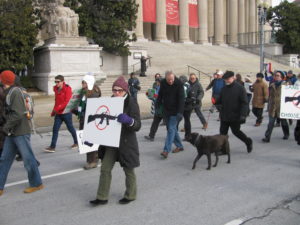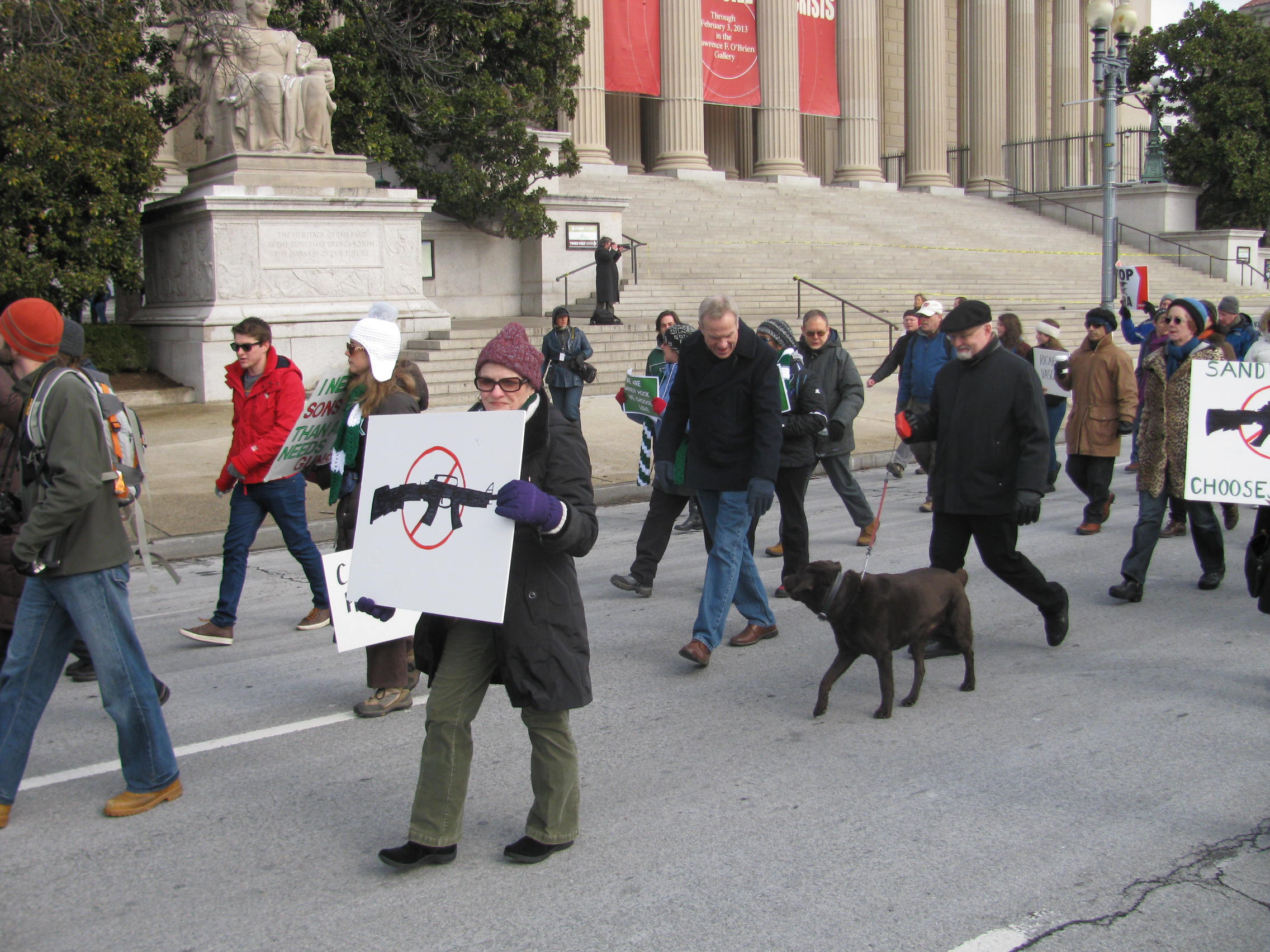After the Oct. 1 shooting at the Route 91 Harvest music festival in Las Vegas — the deadliest in American history — debate on the place of guns in America has seen a revival across the country as well as at Stanford.

Commentators across the political spectrum agree that mass shootings must be curbed as far as possible, but disagree over the preventative measures that should be implemented. The Daily spoke to Stanford students and faculty to get their views on gun control.
Assault weapons
John J. Donohue III, C. Wendell and Edith M. Carlsmith Professor of Law at Stanford Law School, believes that mass shootings can be stopped and that measures restricting assault weapons and attachments are a necessary first step.
Under current federal laws, high-capacity ammunition magazines and semi-automatic weapons are legal, after the Federal Assault Weapons Ban expired in 2004. Other weapons, such as machine guns and other automatic weapons, are, under most circumstances, prohibited. The sale of firearms is also regulated, but unlicensed firearm dealers are exempt from the federally mandated background checks on potential gun buyers.
“Weapons beyond a certain power are no longer serving a legitimate function of self-defense but are elevating the risk to others,” said Donohue, who has done extensive empirical research on the relationship between gun laws and violence.
Stephen Paddock committed the shooting in Las Vegas using semi-automatic rifles fitted with bump stocks, which allowed him to fire nearly as fast as a fully automatic weapon, such as a machine gun. According to Donohue, expanded restrictions on such high-capacity magazines and automatic weapons would be a first step toward preventing a shooting on such a scale — a suggestion that has already been raised among Congressional Democrats, with Senator Dianne Feinstein (D-CA) proposing a federal ban on bump stocks.
Ben Sorensen ‘17 of Stanford Politics and Kayley Miller ’20 of The Stanford Review agreed with Donohue on the subject of restricting assault weapons.
“[Assault weapons] have no purpose beyond the destruction of human life, and there’s no reason for them to be on the streets or for the government to allow them to go unregulated,” Sorensen said.
For Miller, who grew up in a family in where guns were an essential part of day-to-day life, assault weapons mark the clear dividing line between guns that citizens should be allowed to use for non-violent purposes and guns that are largely used to cause harm.
“There are guns that are used safely — these are by hunters, these are by people recreationally at shooting ranges, these are by members of the police force,” Miller said. “And there are these other guns that are used for unsafe reasons.”
Those “other guns” — the ones not used for recreational or self-defense purposes — are the assault weapons that have been used in many of the country’s worst mass shootings. While Miller advocates for the continued right to own guns in certain contexts, she believes that assault weapons should be regulated because they are made for non-recreational uses.
On the other hand, Richard A. Epstein, the Peter and Kirsten Bedford Senior Fellow at the Hoover Institution and a professor at New York University Law School, argued that restricting gun use is counterproductive.
“There is a serious danger that [by restricting gun use] you’re going to stop the use of guns by people who could obtain them legally but increase the fraction of guns that are held by people who use them illegally,” Epstein said.
Right-to-carry
Even if the strategy of reducing the number of guns worked, Epstein warns that potential terrorists might turn to alternative weapons.
“One of the tragedies we know is that if you start putting gun control into place, you’re going to see mass murders take place by somebody rolling a truck into a crowded area, like in Barcelona, or they’re going to take place by somebody loading up a truck with some explosives made out of fertilizer, like what happened in Oklahoma City,” said Epstein.
Instead of restrictive measures, Epstein proposed looking to Israeli policy and permitting law enforcement officials and military personnel to carry concealed weapons off-duty. According to Epstein, in the case of a potentially violent situation, having someone who is experienced in handling weapons could alter the outcome.
However, Epstein conceded that such a strategy could not have stopped the carnage in the case of Las Vegas.
“I don’t think there’s anything that you could imagine by way of return-fire done by people on the ground that could have the slightest impact on what this character did,” said Epstein. “At this point, you really have to deal with predators of one kind or another, people who are completely immoral, totally crazy, often suicidal, so you can’t rely on criminal punishment to stop them — what you have to do is rely on immediate force.”
Conversely, Donohue said that right-to-carry laws — laws that allow citizens to carry concealed weapons, with or without permits — contribute to gun violence.
“Right-to-carry laws greatly expand the number of people who are just out on the street with guns,” Donohue said. “That could have a good consequence if they’re able to fend off or help catch bad guys, but the empirical analysis that I am finishing up now suggests that it actually has adverse effects.”
Donohue added that unintended consequences can result because carrying guns in public spaces increases the risk that they will be stolen.
“The stolen guns are a real problem because that means by necessity that it’s gone from a good guy with a gun to now a bad guy with a gun,” he said.
Ultimately, Donohue and Epstein disagree on the possibility of stopping mass shootings. According to Epstein, mass shootings cannot be prevented: Since regulation cannot deter those intent on carrying out mass shootings, the best strategy is to reduce the impact of such events by being prepared to forcefully engage with active shooters at all times.
Other views
For Miller, her background has led her to believe that guns not manufactured or used for violent purposes have a place in America.
“I definitely think that the country needs to realize that there are two sides to this,” she said.
Miller added that guns were a “uniting force” in her family life and that proponents of a complete ban on guns should recognize that most Americans handle guns responsibly.
Although Sorensen describes himself as a staunch supporter of gun control, he is more ambivalent about the details of existing policies and proposals that seek to restrict guns. For instance, he disagrees that targeting the mentally ill by limiting their right to own firearms — a central strategy in proposed and enacted gun control laws — is a well-informed preventative measure.
“Without due process and without proper evidence-based decision making, these policies really just stand to marginalize people, stigmatize mental illness and deprive rights from a specific marginalized minority group that should be rightfully enjoyed by everyone under the current law,” said Sorensen.
Contact Gabriela Romero at gromero2 ‘at’ stanford.edu.
